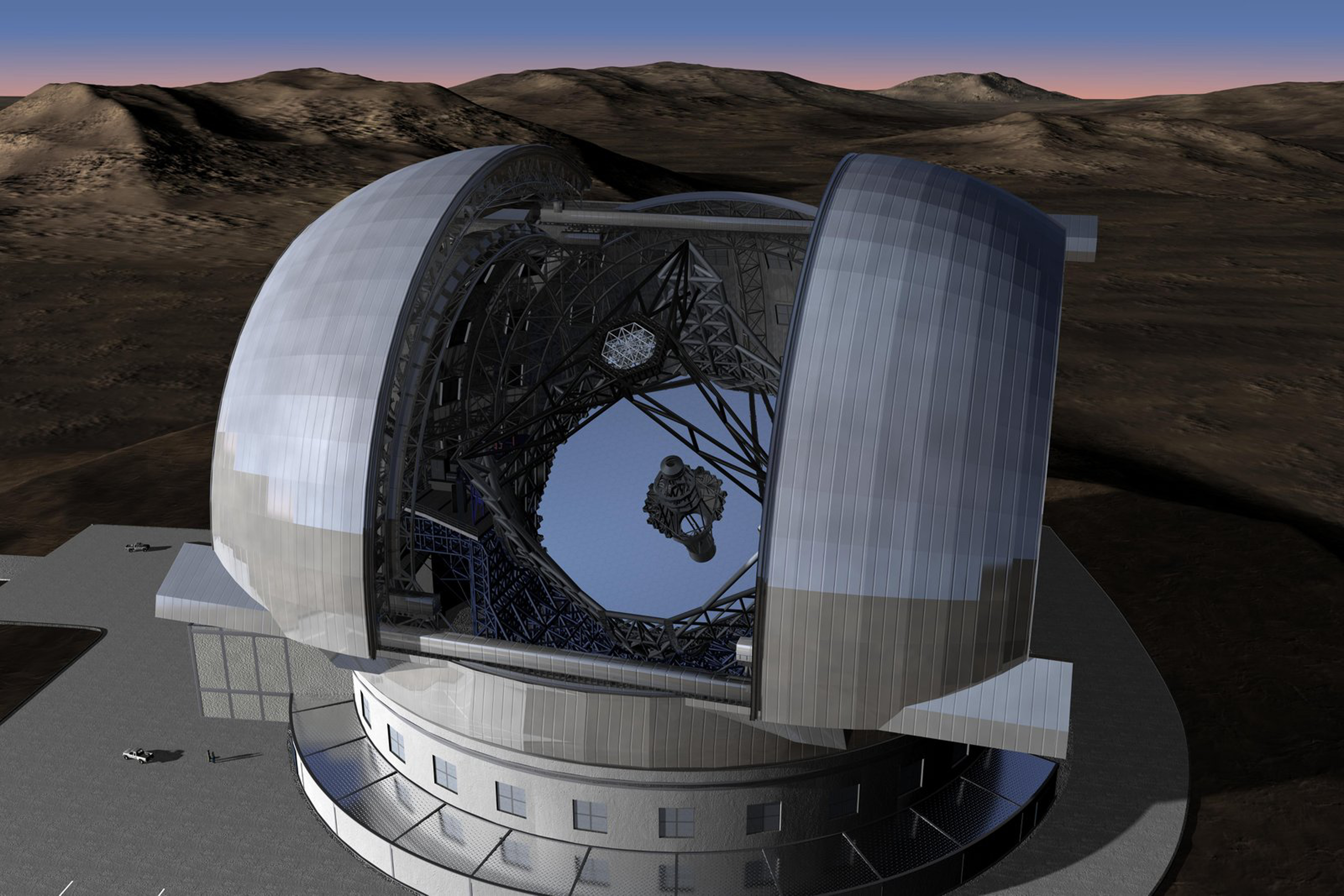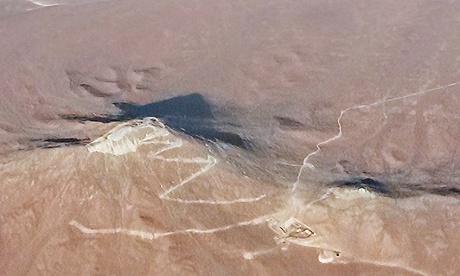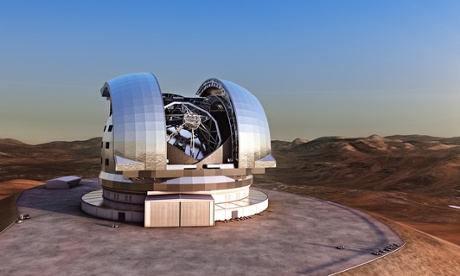
Mountain top blown up to make way for world’s largest telescope – watch again
Construction of the E-ELT monster telescope starts on Thursday with the blasting of a million tonnes of rock from a mountain top. Watch the livestream below

It was one of the last places on Earth I expected to get a mobile signal. And in a few hours' time it won't exist at all.
Between 17:30 and 19:30 BST, the European Southern Observatory will blast the top off Cerro Armazones, a 3,000-metre-high mountain in the Chilean Andes. And the world can watch it happen live via the player embedded below.
Almost a million tonnes of rock will be blown away in the detonation. This will lower the mountain top by 40 metres and provide a plateau on which to build the world’s largest telescope.
The European Extremely Large Telescope (E-ELT) is aptly named. It will be a single telescope with a primary mirror 39 metres across. This is almost four times as large as any other telescope yet constructed. It will collect light about 15 times faster than any other telescope, and will create images 16 times sharper than even the Hubble Space Telescope.
The primary mirror itself will not be a single circular slab of glass and aluminium. Instead it will consist of 789 1.4-metre hexagonal mirror segments that will be fitted and held together like kitchen tiles.
It will search for the as-yet unseen first galaxies to form in the universe, and be able to make direct observations of nearby planets around other stars. However you look at the E-ELT, it is a monster; a truly ambitious science project for the 21st century.
I stood on the peak of Cerro Armazones last December. As I arrived, after an hour’s off-road driving through the Atacama desert and a final hair-raising rally up the side of the mountain itself, my phone suddenly sprang into life.
Days’ worth of text messages came home to roost, having been stored somewhere in the cyber-ether, because for most of the trip I had been beyond reach of a phone signal.
I’d been staying on the remote Cerro Paranal, a few mountain tops away, where ESO had built their previous record-holding telescope. The Very Large Telescope (VLT) consists of four eight-metre wide telescopes that began operating in 1998. This was preceded by a similar mountain-top blasting to create a flat surface on which to build.

I could see the four silver buildings of the VLT shining in the distance, and I tried to imagine what the planned dome of the E-ELT will look like from Paranal. It will be an extraordinary sight. About the height of London’s Big Ben, it will be twice as high and four times as wide as each VLT dome. It will dominate the mountain top.
It represents much more than just science. The UK contribution to the E-ELT is administered by the Science & Technology Facilities Council. In apress release, Professor Colin Cunningham, who leads the UK E-ELT Programme, said, “The E-ELT is one of the highest priorities for [the council] – not only will it be the world’s pre-eminent astronomical observatory for many years to come, it also presents a great opportunity for UK industry, requiring innovative technologies, from engineering to software and instrumentation, both in terms of building this state-of the-art facilities as well as in its ongoing operation.”
So far, more than £9m in contracts have been secured for the UK. These include one awarded to Glyndwr University in North Wales, which is supplying prototypes for the hexagonal mirror segments.
While it is certain that E-ELT will indeed be a major facility for the foreseeable future, there will come a time when a larger telescope is built. And that’s when I start to worry. What will they call that one?
First there was the VLT – Very Large Telescope. Now we will have the ELT – Extremely Large Telescope. What next? The FLT perhaps?
Stuart Clark is the author of The Day Without Yesterday
No comments:
Post a Comment